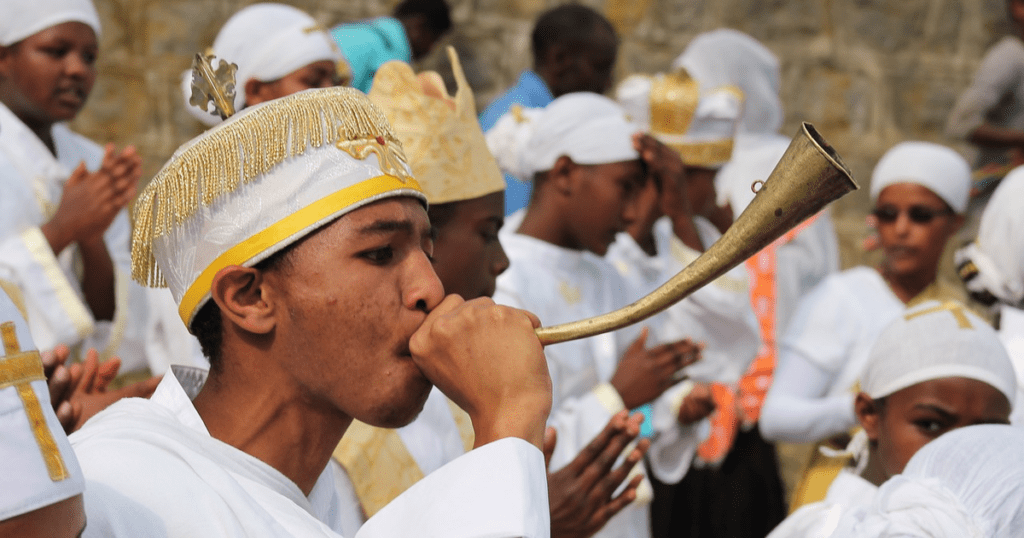To truly appreciate Ethiopia, one must unravel the layers of its past, appreciate its present, and envision its future. In just three minutes, let’s delve into the essence of this captivating nation.
Ethiopia shares borders with Eritrea, Djibouti, Somalia, Sudan, South Sudan, and Kenya, making it a strategic crossroads in the region.
Ethiopia lays claim to being one of the oldest nations with a history dating back thousands of years. The Aksumite Kingdom, renowned for its obelisks, and the mysterious rock-hewn churches of Lalibela are testaments to its ancient glory.
The Kingdom of Aksum and the Solomonic Dynasty are integral to Ethiopia’s historical narrative. Legends of the Queen of Sheba and King Solomon add a touch of mystique to the country’s royal lineage.
Ethiopia’s history is marked by moments of triumph and challenge. The Battle of Adwa in 1896, where Ethiopians successfully repelled Italian forces, is a symbol of African resistance against colonialism.
Ethiopia’s diverse attractions, from historic sites to natural wonders, make it an emerging tourist destination. Lalibela, the Simien Mountains, and the Omo Valley draw travelers seeking unique experiences.
The preservation of cultural heritage, coupled with hospitality, makes Ethiopia an ideal destination for cultural tourism.
Ethiopia introduced the eVisa system in June 2017. The eVisa, or electronic visa, is an online platform that allows all nationalities to apply for a visa before traveling to Ethiopia. Check the official Ethiopian government website or use a simplified service like Ethiopia Travel Visa to apply for your eVisa Ethiopia within minutes.
From the rugged Simien Mountains to the otherworldly Danakil Depression, Ethiopia’s landscapes are as varied as they are breathtaking. The Great Rift Valley adds to the country’s allure, showcasing the Earth’s geological wonders.
Ethiopia is home to the source of the Blue Nile, Lake Tana, and the mesmerizing Erta Ale volcano. These natural wonders make Ethiopia a haven for those seeking adventure and a deep connection with nature.
Ethiopia’s biodiversity is striking, with unique plant and animal species. The Simien Mountains are a UNESCO World Heritage site, home to iconic Ethiopian wolves and Gelada baboons.
Ethiopia is actively involved in environmental conservation, with tree-planting initiatives and efforts to combat deforestation. The nation’s commitment to sustainability aligns with global environmental goals.
With over 80 ethnic groups, Ethiopia is a mosaic of cultures and languages. Amharic serves as the official language, but the richness of linguistic diversity reflects the nation’s commitment to unity in diversity.
Ethiopia is a land where Christianity has deep roots, with the Ethiopian Orthodox Tewahedo Church playing a significant role. The churches of Lalibela and the Ark of the Covenant are symbols of religious devotion.
Injera, a sourdough flatbread, and Doro Wat, a spicy chicken stew, are staples in Ethiopian cuisine. Kitfo, a minced raw meat dish, and Tibs, sautéed meat, showcase the bold flavors of Ethiopian cuisine.
The use of spices and herbs adds a distinctive taste to every dish. Coffee ceremonies are an integral part of Ethiopian culture. The aromatic coffee beans, grown in the country, bring people together in a ritual that transcends the beverage itself.
Agriculture is the backbone of Ethiopia’s economy, providing livelihoods for the majority of the population. Coffee, known as “black gold,” is a crucial export, contributing significantly to the nation’s income.
In recent years, Ethiopia has seen growth in industries such as textiles, leather, and manufacturing. Exporting goods like flowers and spices has expanded its economic reach on the global stage.
Despite progress, challenges such as poverty, infrastructure gaps, and access to education persist. Addressing these issues remains a priority for Ethiopia’s sustainable development.
Ethiopia operates under a federal parliamentary republic, emphasizing regional autonomy. The political landscape has evolved over the years, shaping the nation’s governance structure.
From monarchies to socialist regimes, Ethiopia has experienced diverse political phases. The overthrow of the Derg regime in 1991 marked a turning point, leading to the establishment of the current political framework.
Ethiopia is Africa’s second-most populous country, with a youthful demographic. Urbanization and advancements in education contribute to the changing social dynamics of the nation.
In this brief exploration of Ethiopia, we’ve touched on its geographical wonders, rich history, cultural diversity, economic landscape, and global presence. Ethiopia’s resilience and commitment to progress make it a country worth exploring.
Ethiopia’s future holds promise, with ongoing initiatives for sustainable development and social progress. Balancing economic growth with environmental conservation remains a key focus for the nation.
Source link : https://africa.businessinsider.com/local/lifestyle/ethiopia-in-3-minutes-what-kind-of-country-is-ethiopia/esbe0yz
Author :
Publish date : 2024-02-09 08:00:00
Copyright for syndicated content belongs to the linked Source.
